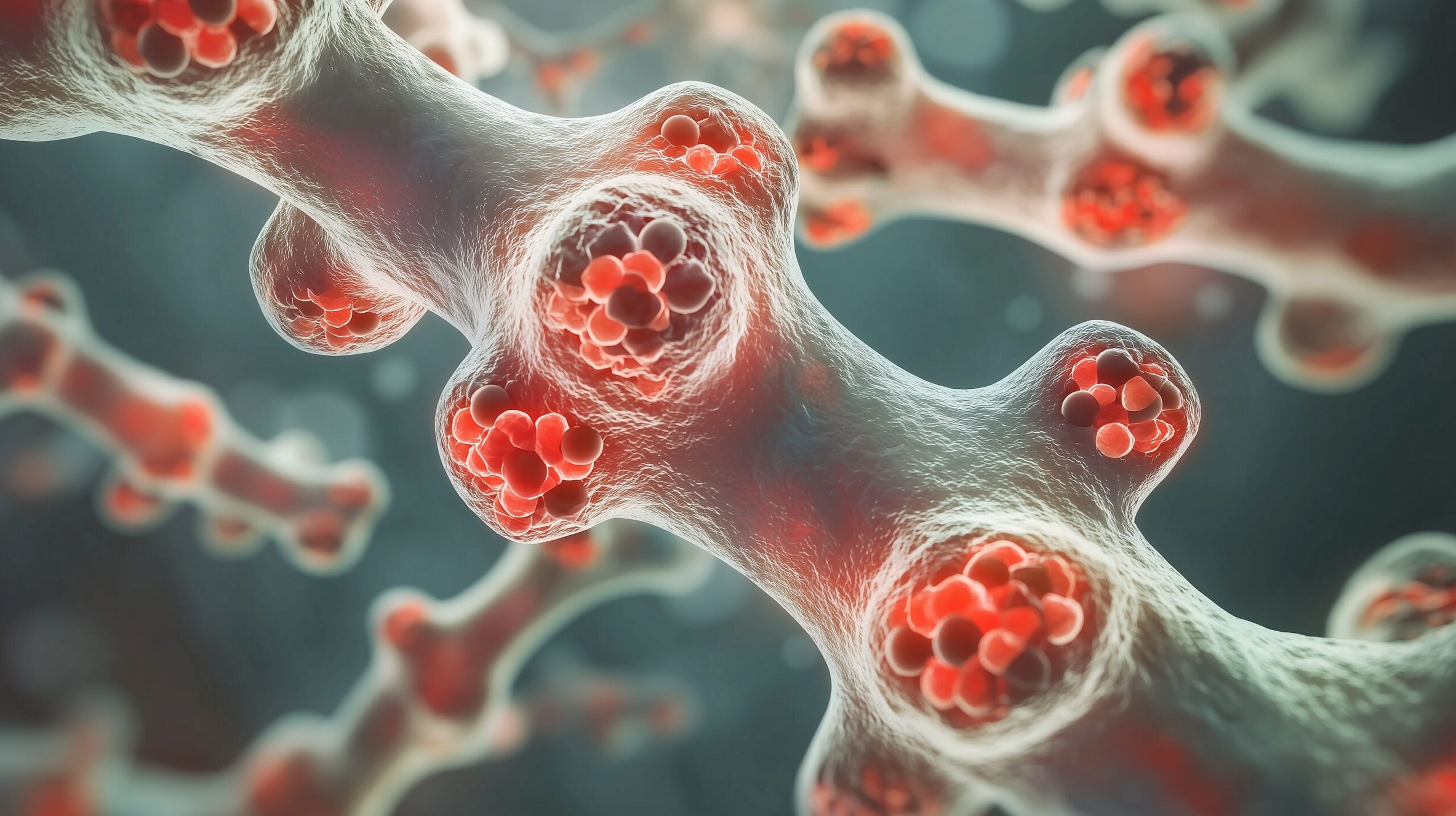Emerging research suggests that the tumor microenvironment (TME) in multiple myeloma (MM) is more complex than currently understood. The findings, published in Blood, showed that myeloma cells formed their own distinct microenvironments, which varied between both patients and spatial locations.1
Multiple myeloma cells illustrated in the bone marrow | Image Credit: © Khella – stock.adobe.com
MM is an incurable clonal proliferative malignancy characterized by the overproduction of B lymphocytes in the bone marrow. It is known for its heterogeneity and the complexity of its TME, which consists of various pro-tumor forces like M2 macrophages and regulatory T-cells that suppress immune responses and promote tumor growth. The combined mechanisms underlying immune cells encourage disease progression. However, emerging data suggest it may be more complicated than that.2
Researchers from the Walter and Eliza Hall Institute of Medical Research (WEHI) in Parkville, Australia, explored the plasma cell and stroma ecosystem in bone marrow samples from 21 individuals, including 7 with pre-malignant disease and 10 with newly diagnosed MM (NDMM). By combining spatial transcriptomics with an optimized trephine biobanking method, they were able to map the main components of the human bone marrow microenvironment and identify different plasma cell populations in healthy, pre-malignant, and active myeloma samples.1,3
The researchers found distinct subgroups of plasma cells in half of the NDMM samples. Interestingly, the makeup of the surrounding blood and stromal cells varied greatly between patients with NDMM. These differences were also seen within samples that contained localized plasma cell subgroups, showing that MM growth is not supported by a single, universal bone marrow environment. Instead, the researchers suggest that different myeloma subgroups create their own unique microenvironments, which can differ between patients and even within the same bone marrow sample.
“We found that each group of cancerous plasma cells creates its own distinct space, with different supporting cells and gene activity,” said Raymond Yip, PhD, a postdoctoral researcher in the Hawkins Lab at WEHI. “It’s like discovering that each tumor has its own postcode. Our findings challenge current thinking on myeloma and could redefine how we understand and treat the disease.”
These findings challenge the long-held idea that myeloma cells grow within a single, uniform bone marrow environment. Recognizing this diversity is important for understanding disease progression and may open new paths for more personalized treatment approaches in MM.
“Ultimately, this research lays the foundation for more effective treatment strategies for myeloma and potentially for other blood cancers,” said Yip. “We hope this work is the first step in developing more tailored strategies and new ways to detect, monitor, and treat [MM].”
